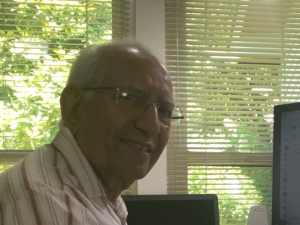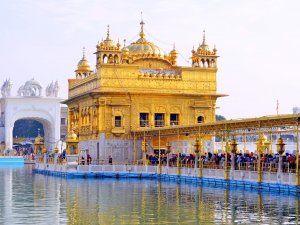The gesture of opening of Kartarpur corridor on the 550th birth anniversary of Guru Nanak by Pakistan Prime Minister Imran Khan is an honest and far-sighted one. India and Pakistan have been at each other’s throats for the past seven decades. The wounds of Partition were waiting for the skies to open up and shower any healing balm from above. The 550th year of Guru Nanak Dev’s advent may well be such a juncture.
Kartarpur Is situated on the western hanks of the Ravi. Across the river on the eastern hanks of the Ravi is the town of Dera Baba Nanak. where Guru Nanak visited often. His in-laws lived there, and this is where Guru Nanak’s family stayed during his long journeys. For centuries — during and after the days of Guru Nanak — devotees routinely travelled both ways on the bridge across the Ravi to pay obeisance at the gurdwaras in Kartarpur and Dera Baba Nanak. They went there for daily prayers and inspiration as well as to touch the dust of the land where Guru Nanak had ingrained his footsteps.
However, during the India-Pakistan wars in 1965 and 1971, this sacred bridge became a casualty - it was bombed for defence reasons. Although the wars were short-lived the loss of the bridge was forever an agony for all lovers of Guru Nanak as the fatally damaged bridge was never rebuilt. After the 1971 war, Sri Nanakana Sahib Foundation, set up on November 11,1975, under the leadership of Sardar Ganga Singh Dhillon, made it its agenda to restore the corridor bridge apart from securing free access to Sikh shrines in Pakistan for devotees and maintenance of these properties. The Nankana Sahib Foundation also pointed out to Pakistani leaders that as long as any Sikh lived anywhere in the world, Guru Nanak’s place of birth at Nankana Sahib and the birthplace of Sikhism at Kartarpur could not be considered evacuee properties as Mecca and Medina could not ever be termed or designated evacuee properties as long as any Muslim was alive. These efforts resulted in the historic declaration on the formation of the Pakistan Gurdwara Parbandhak Committee (PGPC) by the Pakistan president in April 1999.
Among other issues of free access to the Sikh shrines in Pakistan, we asked for a corridor bridge to be built and designated as the 'Baba Nanak International Peace Bridge'. We explored various avenues for construction and financing the bridge on the Ravi to connect the two Sikh historical sites. At the time, Pakistan had already announced the formation of the Pakistan Sikh Gurdwara Parbandhak (management) Committee and thus was friendly towards our proposals. It Is at about the same time that then Indian Prime Minister Atal Bihari Vajpayee visited Pakistan on the opening of the Delhi-Lahore bus service. His inner circles told us that he had talked about the corridor issue with the Pakistan government. Obviously; these conversations were off the record. Perhaps it was because of all this that in November 2000, on the birthday of Guru Nanak, a proclamation was made in Lahore that the Government of Pakistan was ready to collaborate on the corridor project if there was a positive response from the Government of India.
It was on this occasion that our delegation met the World Bank authorities in Pakistan with the help of Sardar Harbhajan Singh of the World Bank in Washington DC. There, in response to our proposal of the Guru Nanak International Peace Bridge, we were told that the World Bank could advance a loan of up to $15 million for it. The caveat was that both Pakistan and India had to consent and apply for the loan together. Initial inquiries made us realize that it would not be possible to have Government of India to support the bridge on account of security concerns.
There was no follow up of the proposals and announcements of those years on the governmental level to my knowledge. Despite all demands, due to a non-mutual agreement between the two sides, the joint corridor was not undertaken.
However, it Is often claimed that both the governments are showing strenuous efforts to initiate a peace process. Since the diplomatic view of both sides was not clear, the plan for this project did not succeed.
In 2001, an old colleague from the 'All India Sikh Students Federation', Jathedar Kuldeep Singh Wadala founded Kartarpur Sahib Ravi Darshan Abhalashi Sanstha in order to raise public consciousness in both the Punjabs. He spoke at numerous public meetings and widely distributed literature supporting this Issue. After this, nearly half-a-dozen organisations got into action to realize this goal of building the corridor. My last visit to Kartarpur was In February 2006 when our foundation organised Guru Nanak Heritage of Interfaith Understanding International Conference In Lahore.
Waiting for three-quarters of a century to travel around two miles for the opening of the corridor is a very welcome step. Nearly 300 million admirers of Guru Nanak all over the world are very jubilant; they will be more so when they walk over the peace bridge in the name of Guru Nanak. At personal level it is like a dream coming true.






